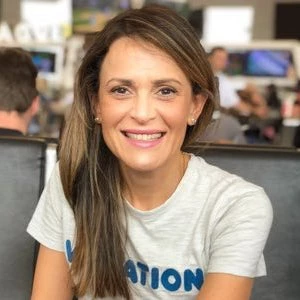 Masai Mara, Kenya
Masai Mara, Kenya
Indigenous Peoples tend to have less access to and poorer quality of education than other groups. Their education often does not incorporate curricula and teaching methods that recognize their communities’ histories, cultures, pedagogies, traditional languages and traditional knowledge. Today is the International Day of the World’s Indigenous Peoples. It is an opportunity to recognize the contributions and achievements of the world’s 370 million Indigenous people from over 90 countries. This year’s theme is Indigenous languages, which is inextricably linked to their right to quality education.
According to the UN, Indigenous Peoples make up approximately 5 per cent of the world's population, but account for 15 per cent of the poorest. They represent 5,000 different cultures and speak a majority of an estimated 7,000 languages worldwide. Forty percent of these are at risk of disappearing, which jeopardizes the cultures and knowledge systems to which they belong. The UN has also declared 2019 as the International Year of Indigenous Languages to highlight the importance of revitalizing and preserving Indigenous languages and showcasing their rich contribution to cultural and knowledge diversity.
The Expert Mechanism on the Rights of Indigenous Peoples states that quality education for Indigenous Peoples means “education that is well resourced, culturally sensitive, respectful of heritage and that takes into account history, cultural security and integrity, encompasses human rights, community and individual development.” This has unfortunately rarely been the case. Education policies and systems have often been used as a means to ‘assimilate’ Indigenous Peoples into broader society at the risk of destroying their culture, languages, identity and rights. Policies and curricula were rarely developed with Indigenous Peoples’ participation or consent.
There is a substantial body of research illustrating the benefits to Indigenous learners of the interdependence between bilingual education, inclusion of Indigenous knowledges, cultural context, and educational attainment. For example, research has shown the importance of integrating Indigenous knowledge and traditional language instruction in the curriculum for pastoralist schools in Kenya. There are also interesting debates in comparative Indigenous education research on how to bring about the perspectives of Indigenous Peoples in education, teaching and research.
Indigenous Peoples often do not have access to schooling in their traditional languages, and the curriculum and teaching methods do not incorporate nor recognize sufficiently their communities’ histories, cultures, ways of learning, and traditional knowledge. While socio-economic outcomes are often worse for Indigenous Peoples than for other groups, the available data typically provide only an incomplete picture about poverty, exclusion, and their priorities and perspectives about education. This is in part because their identity and ways of living encompass both individual and collective rights, and cultural, social and economic aspects. Household surveys often focus on individuals and households, and less on communities. As a result, in education as well as in other areas, policymakers should consult with Indigenous Peoples to ensure effective and inclusive development policies which is central to the World Bank’s Environmental and Social Framework.
What can be done to improve education outcomes for Indigenous Peoples? A recent World Bank publication on Equity and Inclusion in Education in World Bank Projects calls for identifying and dismantling exclusionary practices. It also provides examples of initiatives, including some from World Bank projects, that have taken into account the needs and aspirations of Indigenous Peoples.
· Educational materials with socio-cultural relevance: In Colombia, the Ministry of Education provided technical, pedagogical, and financial support for the participatory design and implementation of education projects and models of learning for Indigenous Peoples. The communities entered into contracts with the government to design and implement projects and educational models integrating cultural components and traditions specific to each community.
· Language nests: Originally developed in New Zealand/Aotearoa, language nests operate like a creche or nursery in which older Maori community members provide childcare while speaking their language. Proximity to elders exposes children to their language in early childhood, a crucial period when children are young enough to acquire fluency. Indigenous language nests have succeeded also in Canada, Hawaii, Australia, Finland, and Russia. They have been shown to revive Indigenous languages at risk.
· Inclusive curriculum: In Nicaragua, UNESCO used an intercultural bilingual education approach that enabled Indigenous Peoples to adapt the curriculum to their own cultural context and reality. The project worked with Mayangna experts, community members, and the Ministry of Education to develop classroom materials in their language and teach their knowledge of the environment while also building social and cultural capital in Mayangna communities. Early results have been positive.
· Bilingual education: Bilingual teaching and learning have been national policy in Paraguay since 1994. Education in two languages while respecting two cultures has served as a foundation to ensure functional and meaningful learning. Simultaneously learning both avoids a long, complicated process of trying to prioritize one language over the other.
Approaches to revitalize, preserve, and promote Indigenous languages need to be country-and community-specific. They also need to be developed with the participation and consultation of Indigenous Peoples themselves. However, experiences show that these approaches can work and make a major difference not only to improve learning outcomes for Indigenous children, but also improving educational attainment, cultural resilience, social inclusion and well-being of Indigenous Peoples more broadly.



Join the Conversation